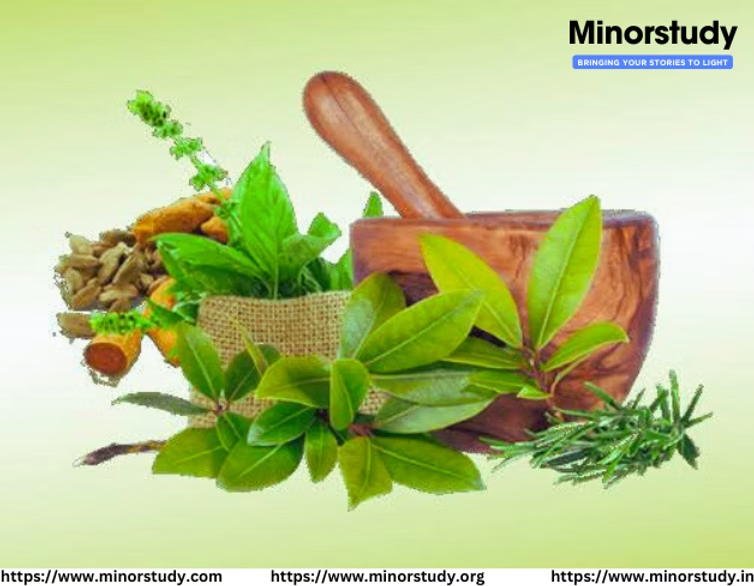Bachelor of Ayurveda, Medicine, and Surgery (BAMS)
The Bachelor of Ayurveda, Medicine, and Surgery (BAMS) is an undergraduate degree that integrates the ancient practice of Ayurveda with modern medical science. It is one of the most sought-after degrees in India for those wishing to become practitioners of traditional medicine. The program equips students with the knowledge of Ayurvedic healing, medicine, surgery, and diagnosis, combining ancient wisdom with contemporary medical techniques.
Overview of BAMS
Key Feature | Details |
Full Form | Bachelor of Ayurveda, Medicine, and Surgery |
Duration | 5.5 years (4.5 years of academic study + 1 year internship) |
Eligibility | Completion of 10+2 with Physics, Chemistry, and Biology as core subjects, followed by entrance exams in some regions. |
Regulatory Body | Central Council of Indian Medicine (CCIM), Ministry of AYUSH |
Focus | Ayurveda, Herbal Medicine, Surgery, Diagnostics, Preventive Healthcare, and Pharmacology |
Core Areas of Study in BAMS
BAMS combines both theoretical knowledge and practical skills. The curriculum focuses on Ayurvedic medicines, diagnosis, treatments, surgery, and preventive health care practices.
Ayurvedic Anatomy and Physiology: Study of the structure and functions of the human body, along with Ayurvedic perspectives.
Principles of Ayurveda: Introduction to the basic principles of Ayurveda, including the concept of Doshas (Vata, Pitta, and Kapha), Dhatus, and Malas.
Herbal Medicine: Learning about the use of plants, herbs, and natural substances for medical treatments.
Diagnosis: Techniques for diagnosing diseases using Ayurvedic methods such as pulse diagnosis (Nadi Pariksha), tongue examination, and urine analysis.
Surgery: Training in traditional Ayurvedic surgical practices and modern techniques.
Pharmacology: Study of medicinal drugs, formulations, and their effects on the body.
Preventive Healthcare: Lifestyle management, yoga, and dietary recommendations for maintaining overall health.
Curriculum Breakdown and Subjects
Year | Subjects |
Year 1 | Basic Principles of Ayurveda, Ayurvedic Anatomy, Physiology, Sanskrit (for understanding classical texts) |
Year 2 | Dravyaguna (Pharmacology), Kaya Chikitsa (Internal Medicine), Swasthavritta (Preventive Medicine), Rachana Sharira (Anatomy) |
Year 3 | Roganidana (Diagnosis of Disease), Shalya Tantra (Surgery), Shalakya Tantra (ENT & Ophthalmology) |
Year 4 | Panchakarma (Detoxification Treatments), Kaumarbhritya (Pediatrics), Prasuti Tantra (Obstetrics), Ayurvedic Diet and Nutrition |
Internship | Clinical practice under the supervision of licensed practitioners, learning from real patient care, diagnosis, and treatments |
Key Subjects in BAMS
Subject | Description |
Principles of Ayurveda | Introduction to the fundamental principles of Ayurveda, such as Dosha, Dhatu, and Mala. |
Anatomy and Physiology | Study of the human body, focusing on both conventional anatomy and Ayurvedic perspectives. |
Dravyaguna (Pharmacology) | Study of the properties, uses, and preparation of medicinal plants and their applications. |
Rog-Vigyan (Disease Diagnosis) | Techniques for diagnosing diseases using Ayurvedic and modern diagnostic methods. |
Surgery (Shalya Tantra) | Involves traditional surgical methods practiced in Ayurveda along with modern surgical techniques. |
Panchakarma | A system of detoxification and rejuvenation using various therapeutic techniques like massage, herbal treatments, and enemas. |
Prasuti Tantra (Obstetrics) | Covers the field of obstetrics and gynecology, with a focus on pregnancy and childbirth from an Ayurvedic viewpoint. |
Kaumarbhritya (Pediatrics) | Focuses on children’s health and diseases, including treatment and management. |
Career Opportunities After BAMS
Role | Description |
Ayurvedic Practitioner | Provides Ayurvedic treatments, consultations, and medicine prescriptions to patients. |
Ayurvedic Consultant | Advises individuals on diet, lifestyle, and herbal remedies based on Ayurvedic principles. |
Ayurvedic Doctor in Hospitals | Works in Ayurvedic hospitals or wellness centers, offering a range of treatments such as Panchakarma. |
Ayurvedic Surgeon | Performs surgery using Ayurvedic techniques and methods. |
Researcher in Ayurveda | Engages in clinical and scientific research to modernize and validate Ayurvedic treatments. |
Academician/Professor | Teaches Ayurveda in medical schools and institutions. |
Pharmacist (Herbal Medicine) | Prepares and sells Ayurvedic herbal medicines or works in pharmaceutical companies. |
Significance of BAMS
Promotion of Traditional Healing: BAMS helps in preserving and promoting the ancient healing science of Ayurveda.
Holistic Approach: Ayurveda emphasizes a natural and holistic approach to health, focusing on balance within the body and mind.
Preventive Healthcare: Ayurveda emphasizes lifestyle management, which is crucial for long-term health and disease prevention.
Increasing Demand: As more people turn to natural healing, the demand for qualified Ayurvedic practitioners is increasing.
Global Recognition: Ayurveda is gaining recognition internationally as an alternative form of medicine, leading to greater career opportunities.
Advantages of Pursuing BAMS
Combines Traditional and Modern Medicine: Provides a comprehensive understanding of both ancient Ayurvedic practices and modern medical science.
Wide Scope: Offers opportunities in multiple fields including clinical practice, research, and teaching.
Growing Awareness: Increasing global awareness of Ayurveda and holistic health care has expanded the field’s potential.
Self-Employment: Graduates can set up their own Ayurvedic clinic, offering consultations and treatments.
Conclusion
The Bachelor of Ayurveda, Medicine, and Surgery (BAMS) offers an extensive and valuable understanding of Ayurveda and integrates modern medical techniques. With a comprehensive curriculum that covers both traditional Ayurvedic medicine and modern science, this degree opens up multiple career paths. Whether it is clinical practice, research, or teaching, a BAMS graduate has numerous opportunities to contribute to the growing field of holistic and preventive healthcare.








